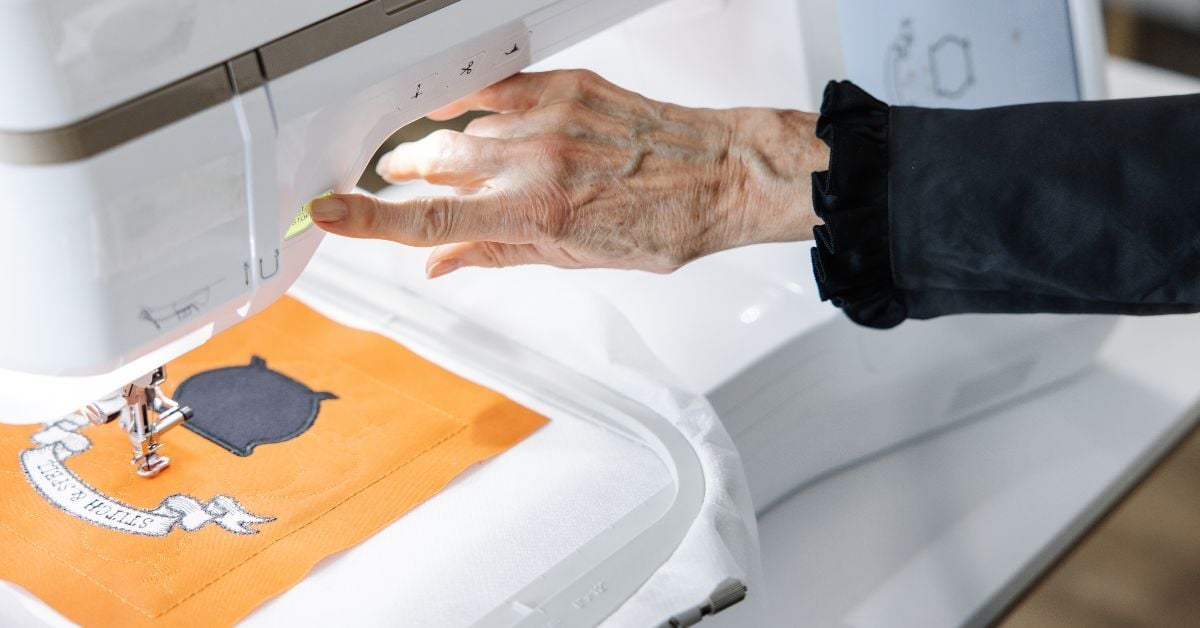Removing Stabilizer Residue Without Damaging Your Fabric

You’ve just finished a gorgeous machine embroidery project—maybe a delicate floral design on a vintage blouse or an intricate monogram on a throw pillow. The stitching looks perfect, the colors pop beautifully, and you’re ready to admire your handiwork.
But wait! There’s that pesky stabilizer residue clinging to your fabric like it’s moved in permanently. Every embroiderer faces this challenge at some point, and honestly, it’s like a rite of passage. Don’t panic. With the right approach, you can banish that stubborn residue without harming your precious fabric. Once you master these techniques, you’ll tackle stabilizer removal with confidence every single time.
Consider the Challenges of Your Particular Fabric
Your choice of material plays a big role in how easy (or stubborn) stabilizer removal can be. The weave, weight, and fiber content all decide which method will work best.
Lace and Other Delicate Fabrics
These beauties can snag, stretch, or tear if you rush the process.
Wash-away stabilizers are some of the best for delicate fabrics. To remove this stabilizer residue without damaging your fabric, use cool water and let time do most of the work. Soak the piece gently rather than agitating it aggressively.
If you encounter sticky spots, resist the urge to scrub vigorously. Instead, use your fingertips to gently work the residue loose with small circular motions. Patience beats elbow grease, especially when preserving those intricate details that make delicate fabrics so special.
Woven Fabrics
These typically handle stabilizer removal much better than their delicate counterparts, but they still deserve thoughtful treatment. The tight weave structure usually means you can be a bit more assertive in your removal techniques without causing damage.
For wash-away stabilizers, cotton, linen, and similar fabrics respond well to slightly warmer water temperatures. Applying gentle pressure can remove any residue, but always test on a hidden area first, as even sturdy fabrics can react unexpectedly to moisture or pressure.
When using tear-away or cut-away stabilizers, woven fabrics can also tolerate careful handling. You can gently pull tear-away stabilizers along the weave direction to avoid distortion. As for cut-away stabilizers, trim them close to the design for a clean finish. Thoughtful treatment ensures your woven fabrics stay in great condition, regardless of the type of stabilizer you used.
Follow the Process of Your Specific Stabilizer
Each stabilizer type has its own specific removal method, and understanding these differences can save you time and avoid frustrating mistakes. Make sure the removal process you use matches your stabilizer.
Wash-Away
Start by trimming away as much excess stabilizer as possible before introducing water. This prevents unnecessary dissolved stabilizer from redepositing on your fabric.
Use lukewarm water. Let the water flow gently over the embroidered area, and watch as the stabilizer begins to dissolve and wash away. If you notice any remaining film or sticky spots after the initial rinse, don’t worry! A second gentle rinse usually takes care of any lingering residue.
Tear-Away
The name gives away the primary technique, but execution matters tremendously. Always tear away from the embroidery, not toward it, to avoid pulling on your stitches.
Work slowly and methodically, removing small sections at a time rather than attempting to tear away large pieces all at once. If the stabilizer resists tearing cleanly, score it lightly with your fingernail or a blunt tool beforehand. Any small pieces that remain caught in your stitches are usually easy to remove with pointed scissors or tweezers.
Cut-Away
Trim cut-away embroidery backing as close to your stitching as possible using sharp embroidery scissors. Take your time with this step to avoid accidentally snipping embroidery threads. Work slowly, especially near detailed areas, and always cut away small sections at a time.
For any visible edges remaining after trimming, carefully scrape them away with a fingernail. Alternatively, use a fine-grit emery board to gently sand down the edges for a smoother finish.
Clean Any Remaining Residue Carefully
Even with the best removal techniques, some pesky residue might still cling to your fabric like it’s hanging on for dear life. This is especially true with older stabilizers or sticky adhesives. It’s also true in humid environments where things tend to get extra stubborn. But don’t let a little residue ruin your hard work. With a few simple tricks (and a touch of patience), you can banish those sticky spots and keep your fabric looking flawless.
Avoid Harsh Chemicals
Your first instinct might be to reach for strong solvents or cleaning products, but resist this urge! Harsh chemicals can discolor fabric, weaken fibers, or even dissolve your embroidery threads. Instead, start with the gentlest possible approach and escalate gradually only if necessary.
For sticky spots that won’t budge with water alone, apply a small amount of mild dish soap directly to the residue. Work it in gently with your fingertips, then rinse thoroughly with cool water. The grease-cutting properties of dish soap often break down adhesive residues without harming most fabrics.
If dish soap doesn’t work, try a paste made from baking soda and water. This mild abrasive can help lift residue without scratching delicate fibers.
Take Your Time
Patience prevents mistakes and damaged fabric, so resist the urge to rush through residue removal. Set aside adequate time for this final step in your embroidery process, especially for important or delicate projects.
Work in good lighting so you can see exactly what you’re doing, and take breaks if you feel yourself getting frustrated. Sometimes, walking away for a few minutes and returning with fresh eyes helps you spot residue you missed or find a better approach to stubborn spots.
Remember that a few extra minutes you spend on careful removal can save hours of trying to repair damaged fabric or redo embroidery work.
Avoid Frustrations and See Success Using Stabilizers
Say goodbye to sticky residue and hello to flawless finishes! Removing stabilizer residue without damaging your fabric doesn’t have to be a dreaded chore. If you practice with a little patience, these techniques will become second nature, and you’ll tackle stabilizer removal like a pro.
At Kimberbell, we know how much you care about every stitch, which is why our stabilizer collection is designed to perform beautifully from hoop to finish. Let’s make those projects sparkle and look their best every single time!



.png)